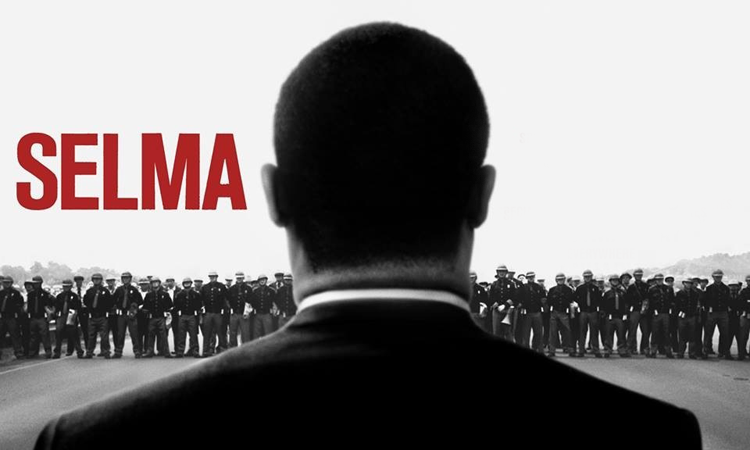
We think we know Martin Luther King, the dreamer, the orator, the man who led a revolution, whose name is on street signs, whose features are now etched in stone at a Washington memorial, who shows up in hip hop videos and computer ads, whose most famous speech may be the most-quoted in our collective memories. “Think different,” said the Mac ad, hiring the image of a political revolutionary to sell computers; even Glenn Beck featured MLK on his wall of great Americans. But there’s not a lot of evidence that we pay much attention to the things King actually said. Companies and celebrities want to identify their brands with an unquestionable hero, making an image rather than a movement. So do most of us, I guess. We can all call to memory the cadence of “I have a dream”. It’s less clear whether we remember the content. The most important coincidence of the acclaimed new movie Selma is arriving at a moment when the deferred dream is starting to reassert itself – in the person of a black president, in the Occupy movement, and most recently in the rallying cry challenging the targeting of black bodies by white power. The most important gift of Selma is that it goes beyond the surface of popular understandings of King and the civil rights struggle, portraying a human being with imperfections as the leader (working with other imperfect people) of a years-long movement. This is the most realistic depiction of organizing for social change that I’ve seen in a mainstream movie. We see people working through the agonizing task of navigating how the movement will achieve its goals – and what those goals are; we see arguments about tactics, and domestic vulnerability too. And we see, of course, the unfathomable suffering of the movement’s martyrs and their loved ones – Jimmie Lee Jackson, summarily executed by police, James Reeb beaten to death, Viola Luzzio shot by white supremacists, and the foreshadowing of King’s assassination.
This matters, not just because it means we have a biopic that has more integrity, but because the way we tell stories about brave people can determine whether we respond by being inspired to our own heroism, or with more powerlessness. Dr King, like Gandhi and Jesus before him, and innumerable other people who embodied risks for transformation, have been too often portrayed in movies and television as almost superhuman, imbued with magical power, lacking either the vulnerabilities that you and I share, or the need to wrestle with what it means to be a person at a point in time, seeking to discern the next step, and the next, and the next. Martin Luther King, in Selma, is a person, not an emblem. A man, with pain and questions, a family to support, a marriage with tensions. Just like the rest of us. Three things identify how he ‘thought different’: his gift, his self-knowledge, and his moment in time. As embodied by the astonishing actor David Oyelowo, Selma’s King has nurtured the skill of leadership that is willing to take the long view, not to ask anyone to do anything he wasn’t willing to do himself, to do the painstaking work of nonviolence for the common good rather than settle for the short term gratification of dehumanizing the other. He knows that this is his gift, and that to undertake the life of a conventional pastor, while noble and personally more peaceful, would be a betrayal of his own vocation. And he sees that this moment in time requires this particular kind of leadership, not because of ego or the desire to grab power, but because every generation gets the opportunity to make things better for the next; and some generations get to do the work of whole peoples.
A week after seeing Selma, the image I’m left with, the one that I have woken up thinking about, that has been what I’ve seen when I close my eyes, that periodically asserts itself into my consciousness as the day unfolds, is not of a man giving a great speech, or of people marching, or of great and powerful men negotiating in the Oval Office, but of a man kneeling. King, on the Edmund Pettus Bridge, at the head of a multitude, waiting for his call to move. It’s an image of prayer, of course – and he is communing with the Divine, asking for wisdom. It is also an image of the willingness to stand still and think, even when the world is demanding you get out of the way. It is an image of leadership – one good person among other good people, showing those good people what to do next. When we pray, to whomever, or however you pray, we may remember that the inner transformative work of spiritual practice is also supposed to be a gift to the world. We are all invited to pursue extraordinary lives. But Selma reminds us that extraordinary lives are lived by ordinary people. They become extraordinary lives when their bearers figure out who they are, and what they want, and learn how to ask for it in a way that sets everyone free.


